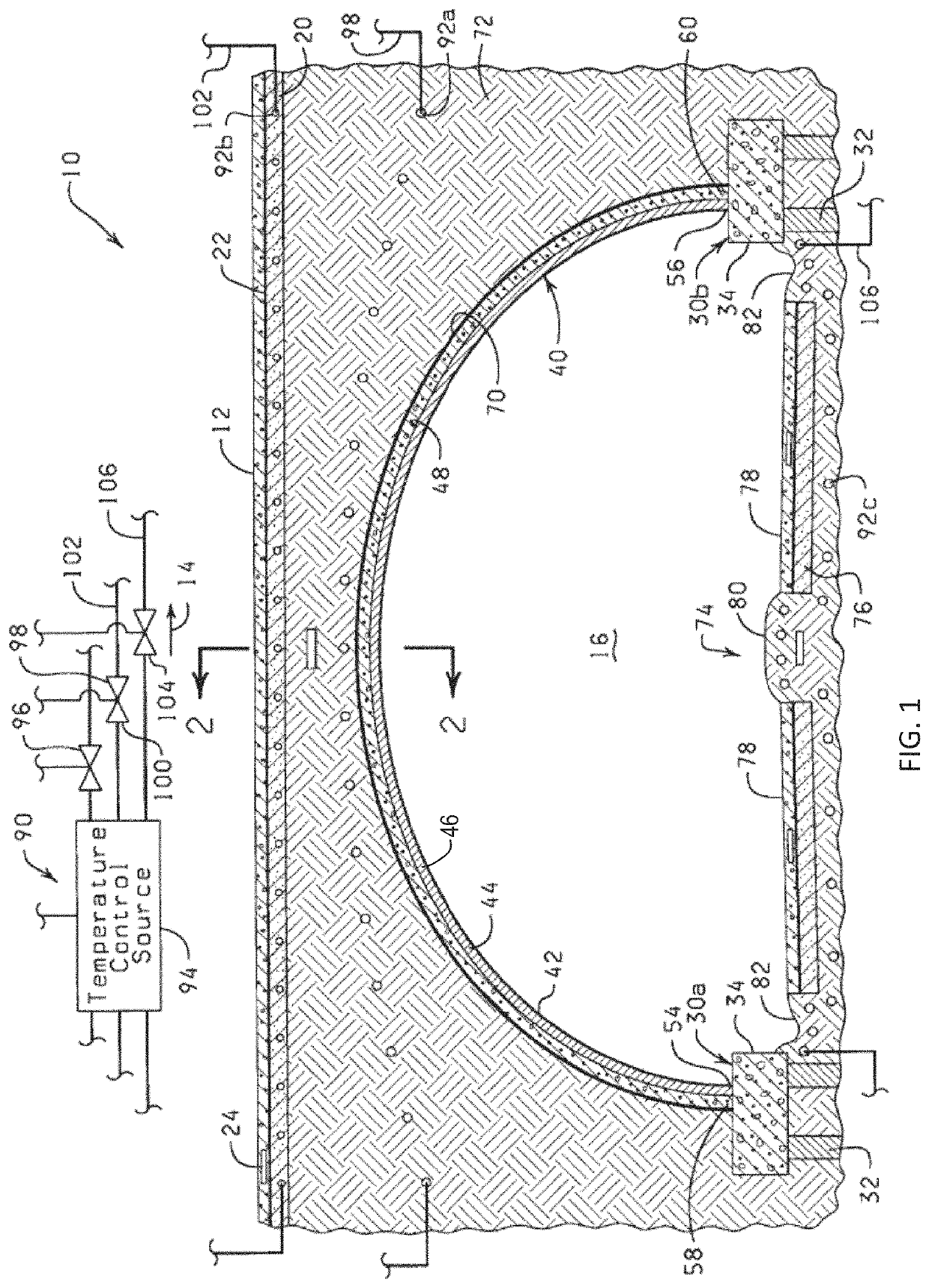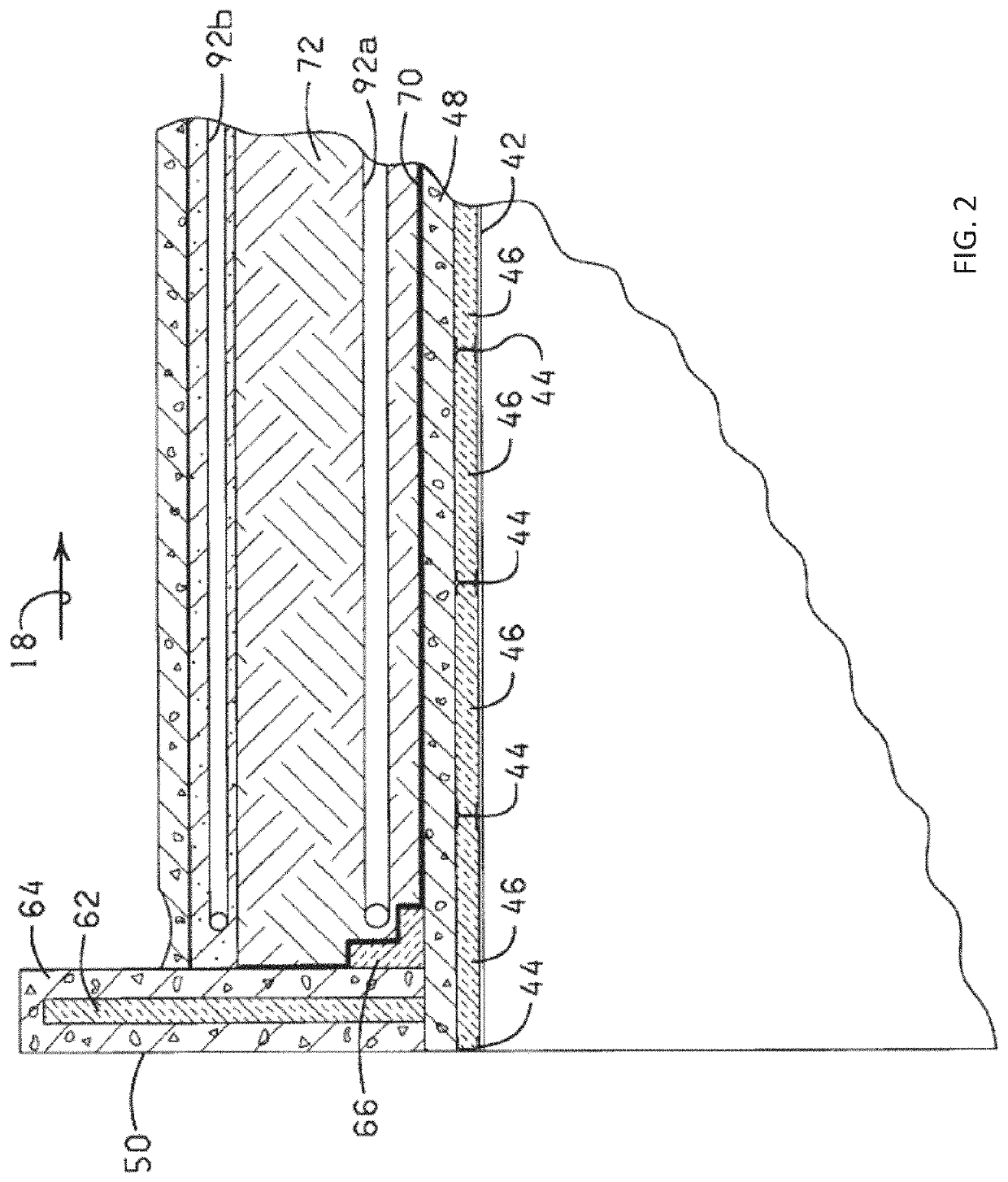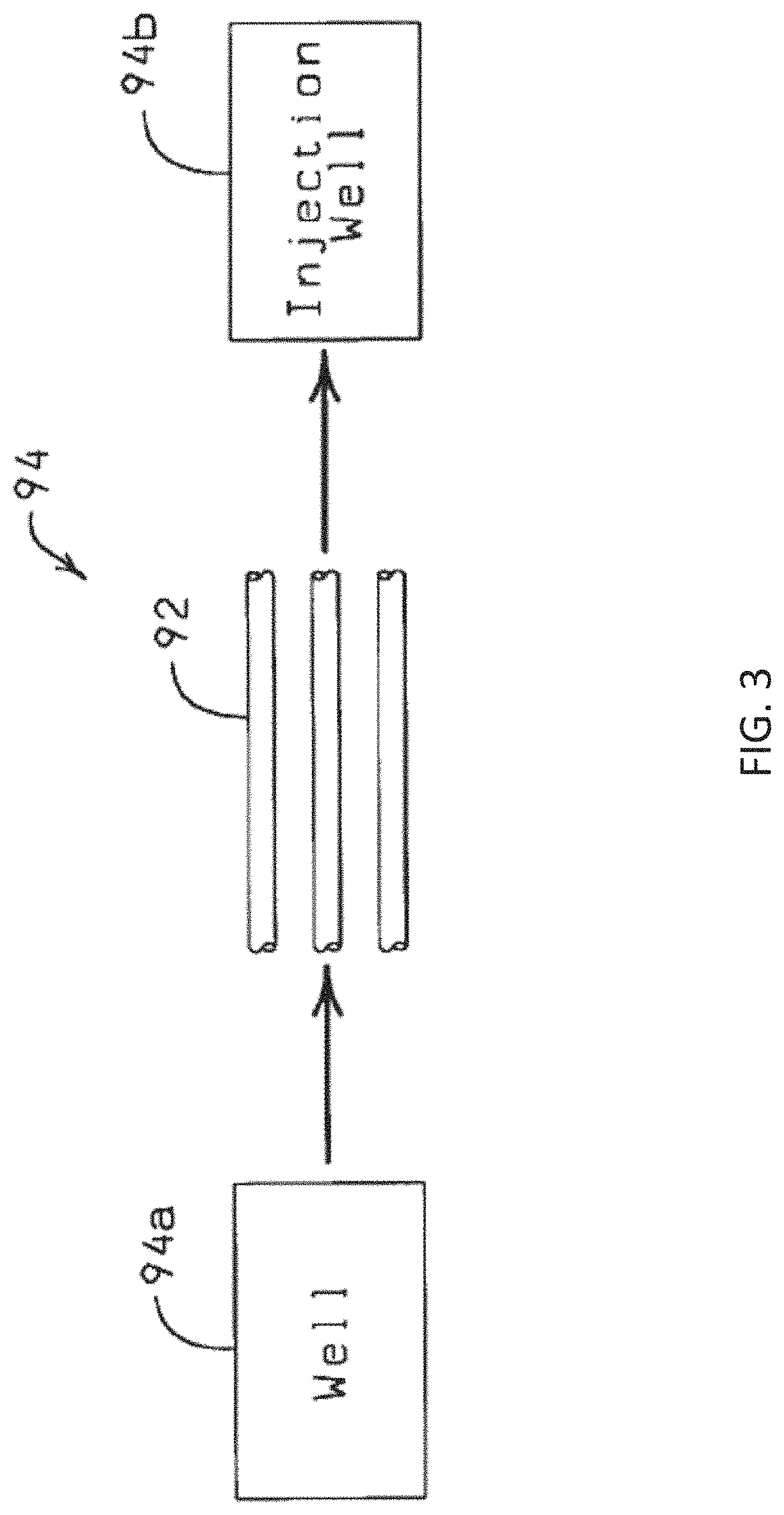Elevated roadway quasi-equilibrium support system
a support system and elevated roadway technology, applied in arch-type bridges, bridges, ways, etc., can solve the problems of bridge strength, bridge integrity can be eroded and ultimately destroyed, and the effect of increasing the strength of the bridg
- Summary
- Abstract
- Description
- Claims
- Application Information
AI Technical Summary
Benefits of technology
Problems solved by technology
Method used
Image
Examples
second embodiment
[0083]Referring now to FIG. 5, shown therein and designated by the reference numeral 10a is a structure 10a, constructed in accordance with the present invention. The structure 10a is constructed in an identical manner as the structure 10, discussed herein with reference to FIGS. 1-4, except as discussed hereafter. The structure 10a is positioned adjacent to a river 150 such that the river 150 flows through an underpass space 16a. It should be understood that the term “river”, as used herein, can refer to any waterway capable of passing through the underpass space 16a, such as a river, stream, diversion canal, or creek.
[0084]The structure 10a includes a pair of inlet barriers 152, and a pair of outlet barriers 154. The inlet barriers 152 are pivotally connected to an inlet side 156 of the structure 10a, generally on either side of the river 150. The inlet barriers 152 are selectively pivotable, as indicated by the arrows 158 and 160 so as to control or direct the movement of the wat...
fifth embodiment
[0095]Referring now to FIG. 8, shown therein and designated by the general reference numeral 10d is a structure 10d constructed in accordance with the present invention. The structure 10d is constructed in a similar manner as the structure 10, except as that the roads 74, median 80, and culverts 82 have been removed and replaced with a continuous bottom 228, extending in between the footings 30d. The continuous bottom 228 can be formed of steel reinforced concrete, or in one preferred embodiment is constructed in an identical manner as the support assembly 40. For purposes of clarity, elements in common between the structures 10 and 10d will not be described hereinafter, but are labeled in FIG. 8 with the same numeral prefix followed by the alphabetic suffix “d”.
[0096]In general, the structure 10d forms a culvert or a pipeline positioned below a fill material 72d, such as the earth. The structure 10d defines a bore 229, which can be utilized for transporting fluids, such as water or...
PUM
 Login to View More
Login to View More Abstract
Description
Claims
Application Information
 Login to View More
Login to View More - R&D
- Intellectual Property
- Life Sciences
- Materials
- Tech Scout
- Unparalleled Data Quality
- Higher Quality Content
- 60% Fewer Hallucinations
Browse by: Latest US Patents, China's latest patents, Technical Efficacy Thesaurus, Application Domain, Technology Topic, Popular Technical Reports.
© 2025 PatSnap. All rights reserved.Legal|Privacy policy|Modern Slavery Act Transparency Statement|Sitemap|About US| Contact US: help@patsnap.com



